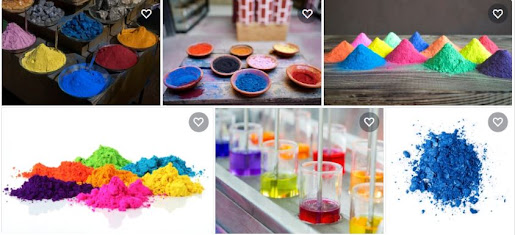Do colors influence the taste of food at all?
You would likely be surprised to know that flavor perception is influenced by color. From bright candies and colorful beverages to colorful sweets or candies, color does not just add aesthetic appeal to any food; it can easily play tricks on your head to make you taste food differently!
Let's dive deeper into how food coloring impacts flavor perception and why tartrazine food color manufacturers play a vital role in the food industry.
The Psychology of Color and Flavor
Humans are visual creatures. The brain uses color cues to form expectations about food:
●Red is often associated with sweet or ripe flavors (think strawberries or cherries).
●Green suggests freshness, acidity, or healthiness.
●Bright yellow from tartrazine hints at lemon, banana, or tangy flavors.
When the color does not match the expected taste, confusion sets in. For instance, a blue-colored drink may remind you of blueberries, even though it is only a citrus soda.
Key Insight: Color affects what we "think" we are tasting.
What Is Tartrazine, and Why Is It So Popular?
Tartrazine is a synthetic yellow food dye that is widely used throughout the food industry due to its bright color and cost-effectiveness
●Commonly used in candies, beverages, snacks, and desserts.
●Helps food manufacturers maintain consistent color appeal.
●Blends easily with other dyes to create a range of colors like orange or green.
Leading tartrazine food color manufacturers produce high-quality, food-safe dyes that meet global safety standards.
How Food Coloring Affects Flavor Perception
Visual Expectation
If you see a yellow cake, your brain expects lemon flavor. If it tastes like vanilla instead, the mismatch might confuse your taste buds!
Intensity of Color = Intensity of Flavor
Studies have shown that more vivid colors can make people feel a stronger flavor, even when the recipe is exactly the same. A vibrant orange beverage will taste more sour than a faint one.
The "Color-Taste" Link
Through experience, our minds correlate certain colors with particular flavors. Here's what it means:
●Yellow = citrus, sweet, or savory (cheesy snacks).
●Purple = grapes or berries.
Producers exploit this correlation between color and flavor to provide their customers with an integral food experience.
Why Tartrazine Would Be a Game-Changer for Food Manufacturers
Innovative tartrazine food color manufacturers help companies look great with bright, bold colors. Advantages include the following:
●Increased Attraction of Products: Brightness attracts consumers, especially children, to bright foods.
●Cost-effective Option: Tartrazine is cheap and effective enough for mass production.
●Diverse Applications: Can be applied to various product lines. Examples include beverages, bakery products, and snack items.
Reliable food color manufacturers such as Alliance ensure that the dye meets all safety and quality standards, thus providing solutions trusted by brands worldwide.
Practical Applications of Tartrazine
Here's where tartrazine makes a difference:
●Beverages: soft drinks, juices, and flavored waters.
●Desserts: jellies, custards, and icing.
●Savory Snacks: chips, cheese-flavored items.
●Confectionery: candies, gummies, and sweets.
When applied correctly, tartrazine enhances both the visual and sensory experience for consumers.
The Role of Trusted Manufacturers Like Alliance
For food brands that want to create attractive products, it is important to join forces with reliable tartrazine food color manufacturers.
Why Alliance organics?
●High-quality, food-grade colors that meet safety regulations.
●Years of experience in providing brilliant, reliable solutions for every category of food.
●Consistent product quality to keep your brand ahead in the market.
Conclusion: Color Matters More Than You Think
Food color does not just make your meal look beautiful; it forms the flavor that you will be feeling. With tartrazine being one of the important components, businesses can combine both visual appeal and taste appeal very well. Get a reliable tartrazine food color manufacturer, like Alliance, to keep your products colorful, attractive, and scrumptious. Color in food is flavor, and it makes all the difference by picking the right color.
.jpg)
.jpg)
.jpg)
.jpg)

